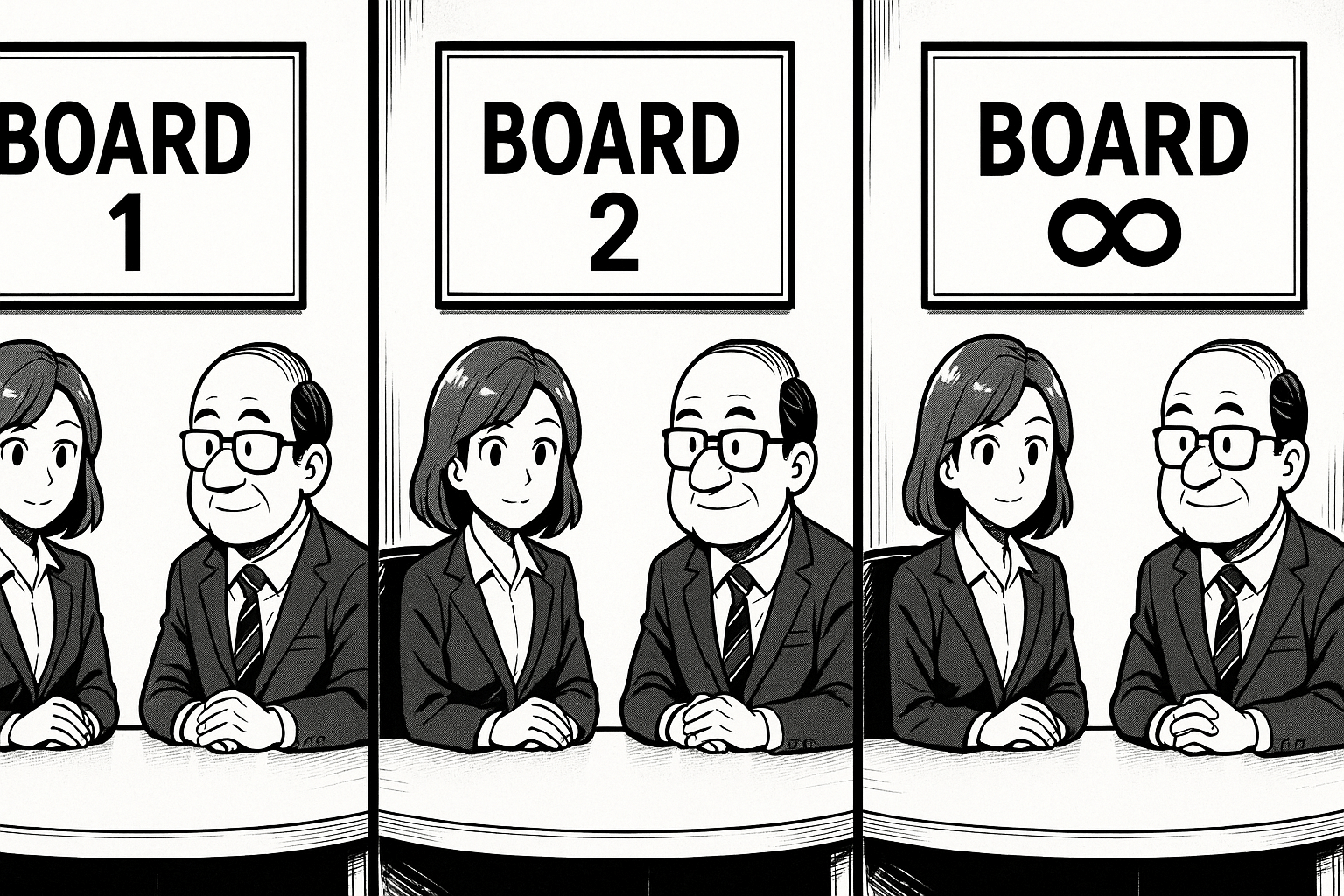
The Spectre of Dual Roles
01 Jun 2025In this essay, I use open-source intelligence to highlight why it’s so important that the professionalisation grant is set up with well-defined boundaries that avoid the complications of dual roles.
Legitimacy depends not just on doing the right thing, but on being seen to do so. Addressing this concern openly is essential.
Let’s walk through an Australian case study to better understand how this kind of challenge can emerge.
Part 1: Meeting with Home Affairs
In January 2025, I submitted a paper to Home Affairs summarising the perspectives of 40 senior cybersecurity leaders on professionalisation.
The paper led to a meeting with the public official who introduced himself as the policy lead for the government’s cybersecurity professionalisation grant.
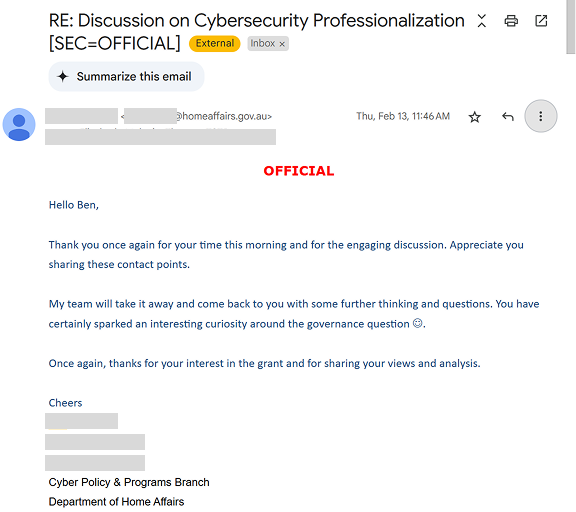
Part 2: Dual Roles
The picture below was posted in February 2025, just days after the grant closed on 29 January. It shows the Steering Committee of a for-profit company. The agenda of the meeting is to contribute to the development the company’s core product.
I have anonymised the picture and all the names.
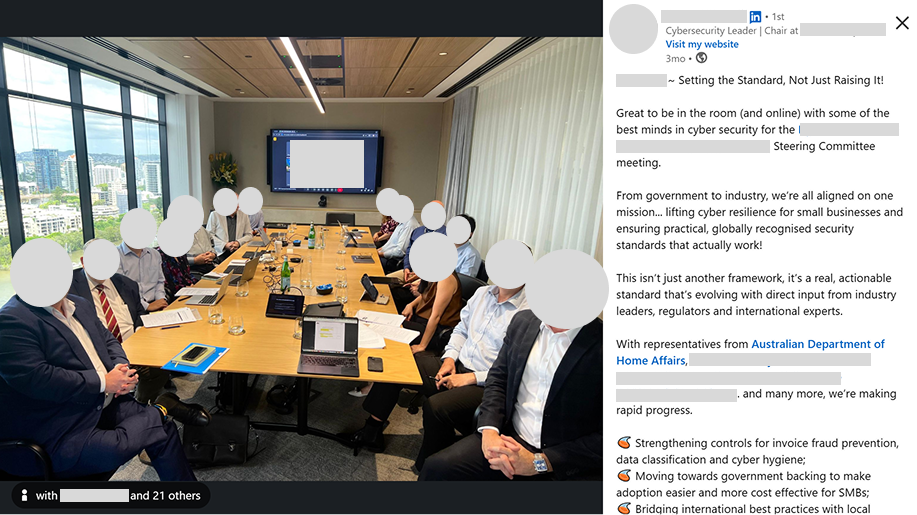
The person I met with at Home Affairs was a Steering Committee member for this company at the time the photo was taken. He is in the picture.
Also pictured are two individuals representing organisations currently bidding for the grant.
One holds a dual role as both the Chair of the company and a co-founder of a not-for-profit organisation that is bidding for the grant.
The other is the president of a major industry peak-body.
Part 3: Analysis - What I want the reader to understand
First, to be absolutely clear: I’m not suggesting that anything improper is happening in this picture, nor am I accusing anyone involved.
So what is my point?
Professionalisation is a sensitive and often divisive issue. Many in the industry remain uncertain or opposed to it, and even supporters do not agree on what form it should take.
That’s why perception matters. Public communication around professionalisation must be handled with care. If you looked at this image and felt a moment of discomfort then you’ve felt exactly what I’m pointing to.
That feeling, however subtle, is what erodes trust. And if professionalisation is to succeed, its leaders must be mindful not only of what they do, but how it’s seen.
If the goal is for professionalisation to be adopted, then the burden lies in preventing avoidable misunderstandings - especially those that reinforce the fear that a small group is shaping the future of the industry by leveraging dual or triple roles.
Part 4: Picture and Bio Removed
Until a few days ago, the picture of the meeting shown above was published on the for-profit company’s website and the Home Affairs public servant was officially listed as a Steering Committee member.
This information has now been removed and replaced with an older picture from August 2024. The public servant’s bio was also removed.
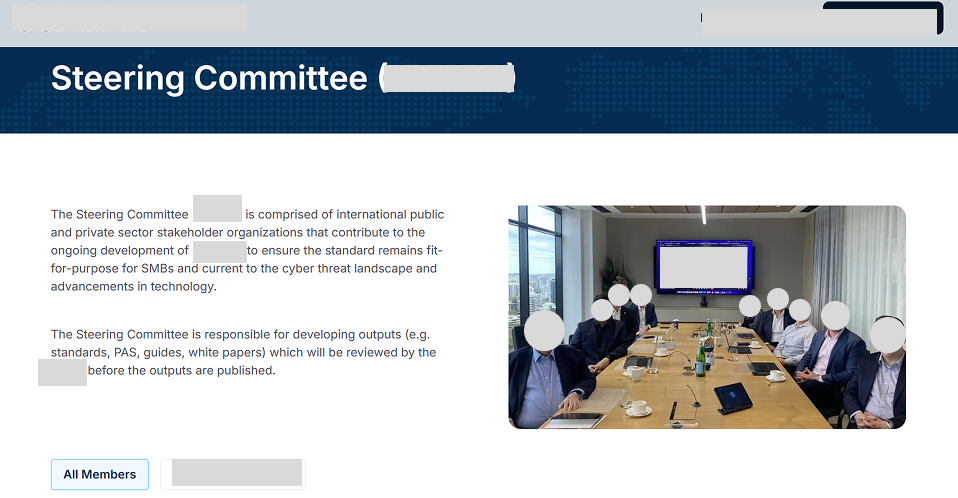
Google still holds a cached result listing the public servant on the company’s website:

I also recovered an official announcement from the company’s social media profile, welcoming him to the Steering Committee:
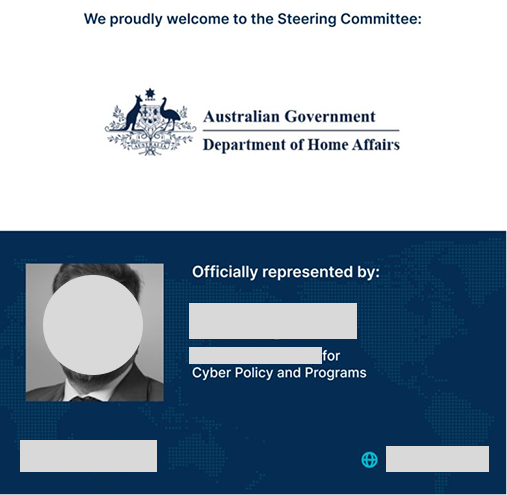
The removal of this material is what prompted me to write this essay. It left me with a feeling - of uncertainty and unease - that I couldn’t ignore.
So I looked more closely, asked questions, and shared the picture with others, including competitors in the grant process. Everyone I spoke with had a similar reaction. The image raised the same questions, the same discomfort. And that, to me, signalled something worth exploring.
What I’ve come to realise is this: if professionalisation is to succeed, managing public perception won’t be optional - it will be essential.
Part 5: Contextualizing the Public Official’s Role
I spoke with the public official, and he shared the following information that should be taken into consideration:
-
He is responsible for shaping or advising on the strategy, direction, and content of the professionalisation policy. He helps guide the thinking, research, and development behind it.
-
He is not the official representative or decision-maker for formal actions - such as signing off on funding, contracts, or official decisions related to the grant. Someone else (the delegate) holds that formal authority.
-
Professionalisation is one of many areas of policies that he works on.
-
Part of his role includes meeting with all the players in the industry.
Part 6: Contextualizing the Steering Committee
It’s important to acknowledge that Home Affairs is not the only government department represented on the company’s Steering Committee - other government organisations are involved as well.
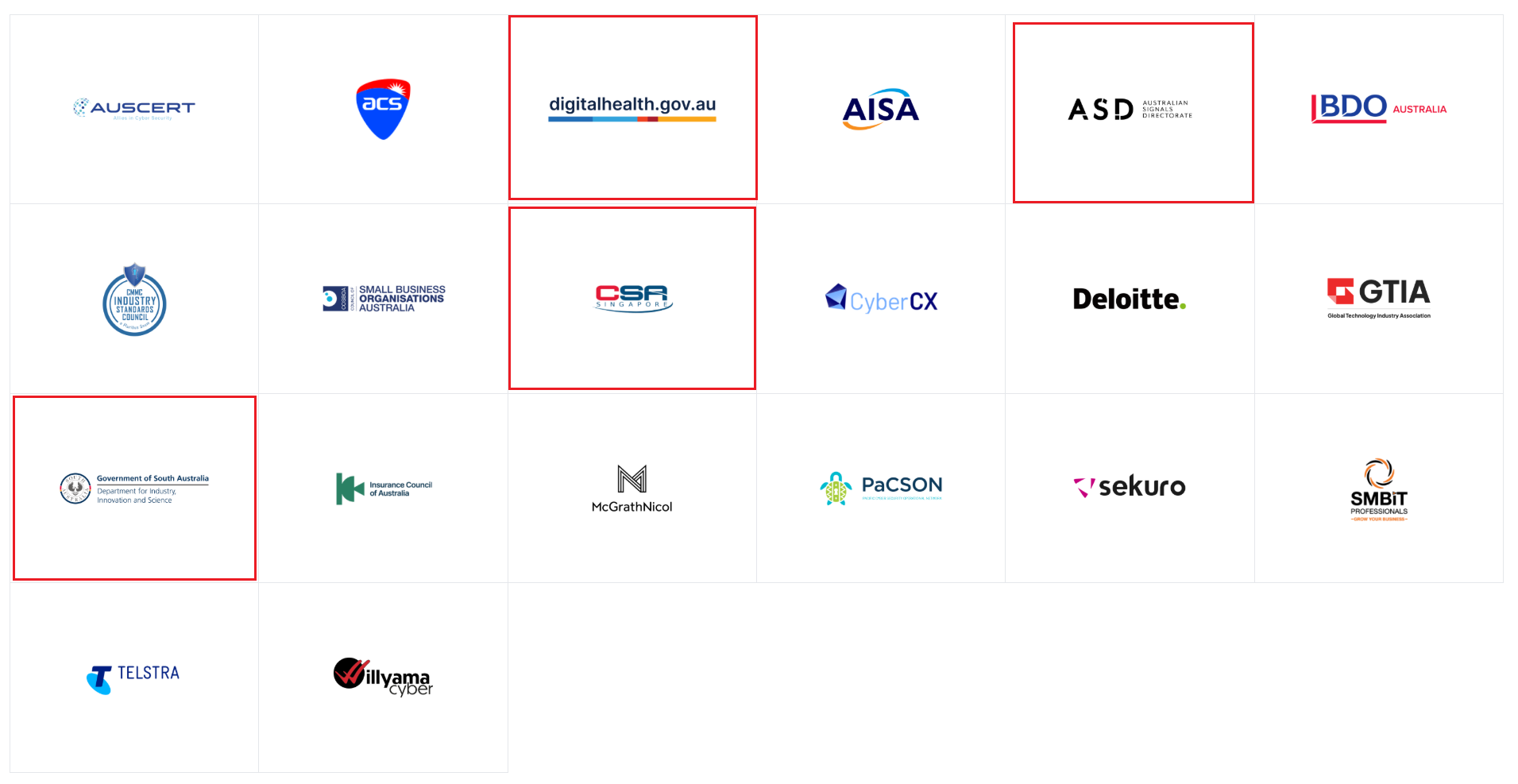
Part 7: Home Affairs’ Response
Home Affairs responded to this piece and wrote this:
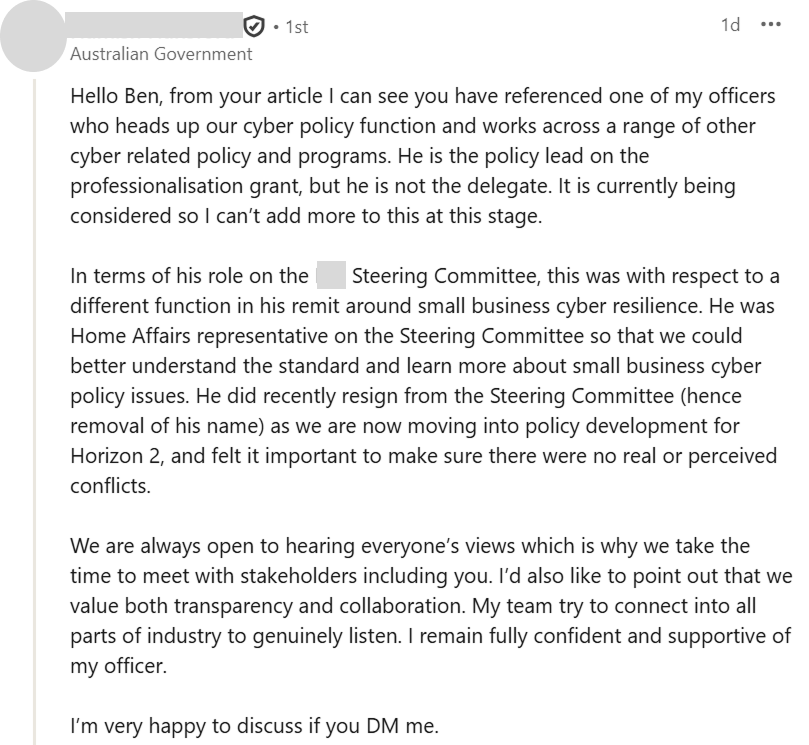
Part 8: The Conspiracy Theories Surrounding Professionalisation
Part of my motivation for writing this essay is to explore the growing sense of unease surrounding professionalisation. While I don’t support the conspiracy theories that have emerged, I do believe it’s important to understand why some people feel this way.
Past failures, perceived vested interests, mixed industry support, unaddressed risks raised by AISA, and a lack of transparency and evidence have all contributed to an atmosphere of mistrust.
A significant source of this mistrust is the presence of dual and even triple roles - where the same individuals are seen shaping the rules, applying for funding, and sitting on decision-making bodies. This concentration of influence may not breach any formal rule, but it creates the appearance of a closed loop. And in a process already marked by division, that appearance alone is enough to undermine public confidence.
Final Words
To be clear, this essay does not suggest that any improper conduct has taken place. Rather, it uses open-source information to open a broader, constructive conversation about governance and public perception - specifically, the challenge of individuals holding multiple roles (including volunteers).
This is not a question of personal integrity - it is a matter of systemic design. Professionalisation, in particular, demands clarity. It cannot earn the trust of the industry if the process appears anything else than free of conflicts of interest and vested interests.
Governance is not just about rules. It is about perception, transparency, and trust. Legitimacy depends not only on doing the right thing, but on being seen to do it - openly and without ambiguity.
Please engage in the conversation and provide your view as to whether perception matters in communal and collaborative efforts such as professionalisation.
Sources:
To respect the anonymity of all parties, I have chosen not to share the URLs of the source materials used in this essay. All information referenced is publicly available, and I have retained copies of all materials should they ever need to be presented in an appropriate setting.
Changes:
- 04/06/2025: Parts 5, 6, 7 and 8 were added.
I am fully open to correcting any errors in this essay, or in any of my past or future writings. If you believe I’ve made a mistake, please reach out. As long as the correction is supported by verifiable evidence, I will make the necessary changes—no matter how small or significant.